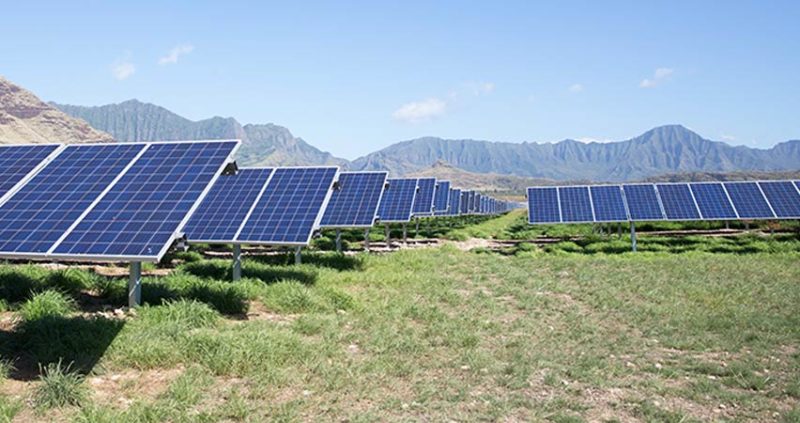Solar outlook looks sunnier after Hawaii PUC rulings

Solar energy development in the Aloha State appeared to shift into higher gear in March when the Hawaii Public Utilities Commission (PUC) authorized a new batch of commercial solar projects. At the same time, the agency also cleared a path for technology upgrades aimed at increasing residential solar generation.
The PUC approved a half-dozen commercial solar farms that will bump up Hawaiian Electric Companies’ contracted renewable energy production, and also gave Hawaiian Electric the go-ahead to begin technology upgrades to the grid that will allow residents to both conserve energy and contribute to the amount of solar power on the grid.
The PUC approved the first phase of a four-year, $86.3 million program that will accommodate a vibrant market for renewable electricity by allowing an easier back-and-forth flow of electricity on the statewide grid. Phase 1 focuses on deploying advanced meters that will upgrade Hawaiian Electric’s ability to closely monitor the flow of electricity from home solar arrays on to the grid, and the power levels flowing through the grid to its residential customers.
“The new technology will help expand the amount of private rooftop solar power, make use of rapidly evolving products – including storage and advanced inverters – and incorporate sophisticated energy management tools, such as demand response,” Hawaiian Electric said in a statement after the ruling.
In an important step, the PUC granted the utility’s request for rate recovery to pay for the project, a decision that Hawaiian Electric said would cost its customers between 24 cents and 55 cents more per month, depending on which of the five islands they reside. Each island has its own generation and transmission grids serving neighborhoods of varying densities and demographics.
Hawaii has committed to producing 100 percent of its electricity from clean sources by 2045. An abundance of sunny days means Hawaii has long been a hotbed for solar energy. As of the end of 2015, Oahu had nearly 41,600 residential rooftop solar systems that add up to a capacity of 343 megawatts (MW), “significantly more than the largest conventional generator on the island,” according to Hawaiian Electric.
By clearing the field for Hawaiian Electric’s new meters and other technology upgrades, more homeowners would presumably embrace private rooftop solar, a type of Distributed Energy Resource (DER) in the utility regulatory arena. “The companies’ grid modernization efforts can serve as a pathway to enable additional value from DER and create opportunities for customers to more fully participate in the energy system,” the PUC said in its order. “These opportunities cannot be fully realized without dynamic rate options and programs that help align customer behavior with grid needs.”
The fleet of advanced meters will also enable customers to monitor their electricity usage in real time, giving them the option to take steps to rein it in. The PUC, in fact, wrote that its Consumer Advocate office “suggests that the companies could optimize advanced meter roll-out design for customer program benefits by prioritizing affluent neighborhoods or circuits with high average use per customer, as opposed to focusing primarily on program participation.”
The PUC also issued rulings in March that pertain to larger commercial solar projects that will also include battery storage for juice that can be drawn on at night or on rainy days. The six approved projects total 247 MW and 1 gigawatt hour of battery capacity; the utility currently has some 500 MW of renewable energy under contract.
Distilled down, the new projects will provide power for 105,000 homes and will offset 48 million gallons of fuel oil and other fossil fuels annually.
“We really appreciate the PUC moving so quickly to review and approve these projects, which enables the developers to meet the aggressive schedule that was set up to take advantage of federal tax credits,” said Jim Alberts, Hawaiian Electric senior vice president of business development and strategic planning.
Moreover, Hawaiian Electric said the new projects, located on Oahu, Maui, and the Big Island, would generate power at less than 10 cents per kilowatt hour as opposed to 15 cents for fossil fuel generation.
